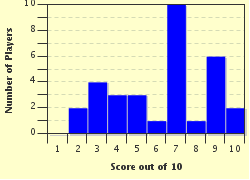Quiz Answer Key and Fun Facts
1. Anagram: Rearrange the capitalized letters to find something that winds. (The first letter of the sentence - Y - and the first letter of Beatles - B - do NOT count toward the scrambled word.)
You were confused when the new music school GRAD cavorted down the extended crooked lane that led to your door, flinging his cap into the air, DANcing and singing like a LOON, ENDING WITH a Beatles song.
2. Cryptic: You may have heard that the winding shape of DNA has a pronounced effect on how your son samples an ice cream cone or how a dog kisses your face.
3. Fractured Words: Say the words out loud and put them together to get a word for a line or path that winds sharply from one side to another.
Sick Sack
4. Rebus: Put together the clues to form a word for a thin, curly piece of hair or a twining plant part.
Decade number + physician + a seemingly logical but wrong way to write 49 in Roman numerals.
5. Missing Letters: Fill in the missing vowels to find a winding, circular curve used to embellish calligraphy, print font, architecture, coiffure, or other decorative design.
CRLC
6. Add a Letter: Add the given letter to a word to get another way to say "wind around in a circle".
British slang for toilet + P.
7. Cryptic: Snakes are swallowed by workers in the kitchen!
8. Hidden Word: In the following sentence, find a noun that indicates a winding, whirling movement.
Ancient Greeks described a mathematically elegant geometrical structure, with the chaos of the Minotaur concealed in its center, but I ask you, "Is mythology rational?"
9. Cryptic: Have you heard reports of a snake endlessly hanging on the prong of a fork?
10. In Other Words: From the synonyms given, get two words that describe something one might wind up before going to bed.
Frighten timekeeper.
Source: Author
nannywoo
This quiz was reviewed by FunTrivia editor
spanishliz before going online.
Any errors found in FunTrivia content are routinely corrected through our feedback system.

